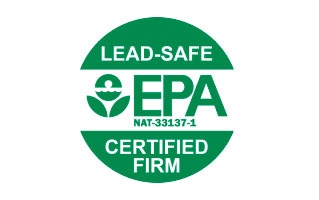
Millipedes (Class: diplopoda) are fascinating arthropods known for their numerous legs and segmented bodies. Often mistaken for centipedes, they are harmless scavengers that play a crucial role in breaking down organic matter. Found in damp environments, millipedes thrive on decaying leaves, wood and plant debris, contributing to soil health and nutrient recycling.
How to Identify Millipedes
Millipedes have cylindrical bodies divided into multiple segments, each segment typically bearing two pairs of legs. They range in color from brown and black to more vivid hues in some species, such as the giant African millipede.
Millipedes are relatively slow-moving and tend to curl into a tight coil when disturbed, a behavior that helps protect their softer underside. They can be found in damp environments where they feed on decaying organic matter.
Signs of an Infestation
Although millipedes are not harmful to humans, a sudden increase in their numbers can be a nuisance. Indications of a millipede infestation include:
- Large numbers of millipedes in damp areas of your home, such as basements or crawl spaces.
- Finding millipedes in bathrooms, kitchens or other areas where moisture is present.
- Discovering millipedes near decaying plant matter or organic debris outside your home.
If you notice these signs, it may be time to take action to manage the infestation.
Health and Damage Considerations
Millipedes do not pose significant health risks to humans. They do not bite or sting and they are not known to carry diseases. However, they can produce a defensive fluid that may cause mild skin irritation in some individuals. It is advisable to handle millipedes with care or avoid direct contact.
While millipedes are not destructive, their presence in large numbers can be unsettling. They will enter homes in search of moisture or when their natural habitat is disturbed.
Behavior
Millipedes are primarily nocturnal, emerging at night to forage for food. They are scavengers, feeding on decaying organic matter such as dead leaves, rotted logs and other plant material. This behavior plays a crucial role in breaking down organic matter and recycling nutrients back into the soil.
Unlike centipedes, which are predators, millipedes do not hunt other insects. Their primary defense mechanism is to curl into a tight coil to protect their vulnerable undersides and release a foul-smelling fluid to deter predators.
Habitat
Millipedes thrive in moist environments where they can find ample organic matter to consume. Common locations include:
- Leaf litter
- Under rocks and logs
- In compost piles
- In garden beds with decaying plant material
In urban areas, millipedes may also be found in basements, crawl spaces and other damp areas of homes. They prefer dark, humid conditions and will seek out these environments to maintain their hydration and find food.
Lifecycle
The lifecycle of a millipede consists of several stages:
- Egg: Millipedes lay eggs in the soil or other hidden locations. The eggs hatch into nymph.
- Nymph: Newly hatched millipede larvae are small and have fewer legs than adults. They undergo several molts, each time gaining more segments and legs. As they grow, millipedes continue to molt and add segments. This stage lasts several months to years, depending on the species.
- Adult: Once fully grown, millipedes reach maturity and are capable of reproduction. Adult millipedes can live for several years under favorable conditions.
Feeding
Millipedes are detritivores, meaning they feed on decomposing organic matter. Their diet includes:
- Dead leaves
- Decaying wood
- Rotted fruits and vegetables
- Other plant debris
By consuming and breaking down this material, millipedes contribute to soil health and nutrient cycling. They play a vital role in the ecosystem by helping to decompose organic matter and enrich the soil.




